Military To Mainstream Vehicles
Free Car Insurance Comparison
Compare Quotes From Top Companies and Save
Secured with SHA-256 Encryption
Tracey L. Wells
Licensed Insurance Agent & Agency Owner
Tracey L. Wells is a licensed insurance agent and Farmers insurance agency owner with 23 years of experience. He is proud to be a local Farmers agent serving Grayson, Georgia and surrounding areas. With experience as both an underwriter and agent, he provides his customers with insight that others agents may not have. His agency offers all lines of insurance including home, life, auto, RV, busi...
Licensed Insurance Agent & Agency Owner
UPDATED: Nov 13, 2023
It’s all about veterans. We want to help you make the right coverage choices.
Advertiser Disclosure: We strive to help veterans make confident auto insurance decisions. Comparison shopping should be easy. We are not affiliated with one auto insurance company and cannot guarantee quotes from any single company. Our partnerships don’t influence our content. Our opinions are our own. To compare quotes from many different companies please enter your ZIP code on this page to use the free quote tool. The more quotes you compare, the more chances to save.
Editorial Guidelines: We are a free online resource for veterans interested in learning more about auto insurance. Our goal is to be an objective, third-party resource for everything auto insurance-related. We update our site regularly, and all content is reviewed by auto insurance experts.
UPDATED: Nov 13, 2023
It’s all about veterans. We want to help you make the right coverage choices.
Advertiser Disclosure: We strive to help veterans make confident auto insurance decisions. Comparison shopping should be easy. We are not affiliated with one auto insurance company and cannot guarantee quotes from any single company. Our partnerships don’t influence our content. Our opinions are our own. To compare quotes from many different companies please enter your ZIP code on this page to use the free quote tool. The more quotes you compare, the more chances to save.
On This Page
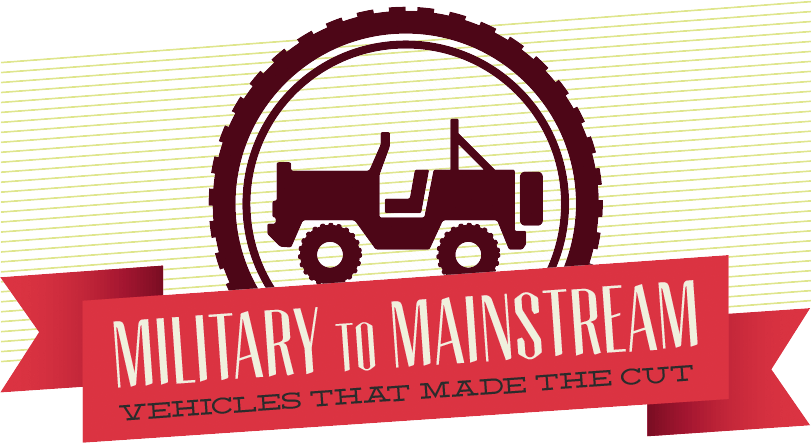
It is often said that necessity is the mother of invention, and nowhere, perhaps is this more apparent than on the field of battle
War sees rapid advancement in everything from medical techniques to aviation technology, and seemingly all things in between. When the war is ended, however, these advancements in technology don’t simply sit on the shelf. More often than not they find their way into everyday applications in modern life. A great example of this are the vehicles that are produced for war, such as the iconic Jeep, the well-known humvee, and the hardworking armored vehicle.
Each of these vehicles has a place in our modern society
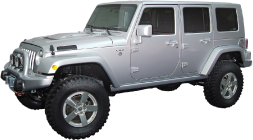

Jeeps can be seen just about everywhere, whether on a city street or a beach
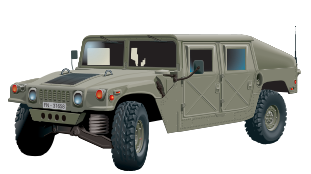

Hummers are the civilian version of the military Humvee, but even a few decommissioned military grade Humvees can be found kicking around the streets
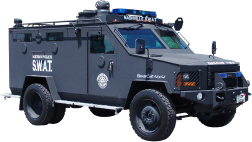

And, finally, most police departments now are equipped with an armored car designed specifically to deal with the threat of a well armed criminals or, in the worst case scenario, the danger of terrorists.
While each of these vehicles are familiar sights in our modern society their original purpose was to help dominate the field of battle. So, whether you’re driving a Jeep or a hummer, or you’re a law enforcement officer who works occasionally as a member of a quick reaction team out of an armored vehicle, that vehicle’s mechanical ancestors were once significant parts of the modern battlefield.
The Armored Car
The armored car that we are familiar with today has its origins in a basic concept put forward by the famed inventor and artist Leonardo Da Vinci, and has since been built upon.
By the late 19th century armored cars were appearing. The goal behind the creation of the armored car was to create a vehicle that would enable the rapid deployment of machine-guns to crucial points on the field of battle. It was also hoped that the newly created armored cars would be able to take the place of cavalry, and help increase a unit’s weight of fire. The first of these vehicles, however, offered little in the way of protection for the crews which were operating them, and brought almost nothing to the battlefield in the sense of firepower. In addition to this lack of firepower and physical protection for the crews, the first armored cars were not fast enough to compete with the speed and mobility of the calvary. By the beginning of the twentieth century, though, developments and improvements in automobile engines allowed for the creation of functioning and effective armored cars.
In 1911 armored cars first saw combat in the Italio-Turkish war, and they would then later see limited combat in the First World War where they were increasingly used as anti-aircraft platforms as air power surged forward. In addition to their use as anti-aircraft weapons, the armored cars served as protection for high ranking officers as they made their way to various points on the fields of battle.
Perhaps the first transition that was made with the armored car from the battlefield to the civilian world occurred in 1930. The Mercedes Benz Company, following in the footsteps of the Rolls Royce Company which had produced armored vehicles for the Triple Entente’s war effort against Germany and the Central Allies during the First World War, built the Nurburg 460. The Nurburg 460 was specifically designed and created to protect Pope Pius XI.
After the First World War, though, armored cars saw increased combat duty during the German revolution which took place from 1918 to 1920. In the close confines of the street fighting in such cities as Munich the armored cars were essential elements of the fighting.
Armored vehicles continued to be part of the arsenal of modern and modernizing armies as the world edged closer to the Second World War. During World War II the United States of America mass produced the M8 Greyhound, a light armored car equipped with a 37 mm gun. Originally the Greyhound was designed as an anti-tank vehicle, but the armor of the various German tanks proved to be too heavy, and instead the Greyhound was pressed into service as both a reconnaissance vehicle and as an infantry support vehicle. The Greyhound was mass produced and used extensively by both the United States and by the British, seeing action in both the European and Middle Eastern theaters of the war.
Today the world is no stranger to the idea of an armored vehicle. Armored vehicles are used to protect celebrities, politicians, and heads of state as well as to protect the transfer of money between financial institutions. On any given day armored cars can be seen transporting money from retail businesses to banks. In addition to these two types of armored vehicles people may be aware, at least through the news media, of police armored cars. The armored cars and vehicles employed by the police — most recently during the massive manhunt following the Boston Marathon bombing — are more in line with the original armored vehicles that prowled the fields of battle. The police armored vehicles are designed to be fast moving and heavily armored, capable of delivering well trained and armed police officers to dangerous situations.
The quick response armored vehicle of the police, then, is one of the vehicles which has made the successful jump from the field of battle to the streets of modern America.
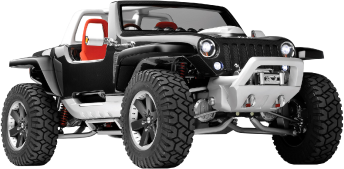

Perhaps nothing is more iconic than the American Jeep.
Compare quotes from the top auto insurance companies and save!
Secured with SHA-256 Encryption
The Jeep
While we may not understand it — it is a Jeep thing, after all —
Jeeps seem to be everywhere.
It doesn’t matter if the Jeep is the traditional top down, doors off that beach lovers everywhere seem to adore, or if it’s a Jeep Cherokee that looks more like your traditional SUV. Whatever style of Jeep it is, it’s sure to be recognizable, but it’s still a far cry from its humble origins in 1940.
By 1940 the United States of America was desperately trying to keep itself out of the war which was raging across Europe, but President Franklin D. Roosevelt felt certain that at some point the United States would be drawn into the war. With this in mind planners and staffers began preparations for what they considered would be the inevitable. Part of these preparations were looking for a lightweight, reliable vehicle that would be able to serve as a reconnaissance vehicle in a wide variety of terrains for the American military.
In 1940 the United States military put out a request for a design for such a vehicle, and soon they had a response from the American Bantam Car Company. The only catch to this request was that the American Bantam Car Company had to have a working design for the vehicle within 49 days. It was at this time that the company approached Karl Probst, a freelance designer working out of Detroit, to create the vehicle since the American Bantam Car Company was both bankrupt and without any engineers left on its team.
Bantam Reconnaissance Car:
The Bantam met all of the Army’s requirements save for one: the Bantam engine did not deliver enough torque for the military’s needs.
Initially Probst refused the offer, but after some pressuring and insistence on the part of the United States’ government, agreed to take on the task. Thus, on July 17, 1940, Probst began working on the design, without any salary initially.
Amazingly enough Probst drew up the plans for the prototype in only two days. The vehicle, known initially as the Bantam Reconnaissance Car, was pure genius as most of it could be assembled from parts that were readily accessible through the Bantam warehouses. The only part of the vehicle which was not part of the Bantam inventory was the design for the four-wheel drive components which were custom, and had had to be ordered through Spicer automotive.
The prototype Bantam Reconnaissance Car was assembled, by hand, in Butler, Pennsylvania. The vehicle was then driven to Camp Holabird in Maryland for September 21st, 1940, where the testing phase was initiated.
Unfortunately for the American Bantam Car Company the United States Army did not feel that the company was sufficiently large enough to produce the vehicle in the numbers that the Army believed that it was going to need should they become engaged in hostilities. In order to see if the Bantam Reconnaissance Car could be built in sufficient numbers, the Army sent the designs for the Bantam to two other companies, the Willys-Overland Company and the Ford Automotive Company.
Each of the three companies built additional copies of the original Bantam Reconnaissance Car — with Ford and Willys creating their own modifications to the designs — and the Army put the vehicles through their paces. In the end the Willys version of the Bantam Reconnaissance Car, with the Willys ‘Go Devil’ engine, won the production contract from the Army. The Department of Defense, however, realized that even Willys wouldn’t be able to produce the number of vehicles that would be needed, and convinced Willys to agree to share their design so long as the Willys Company was the primary provider. While the American Bantam Car Company did not provide their vehicle for the upcoming war effort, the company did build heavy-duty trailers for the military during the Second World War.
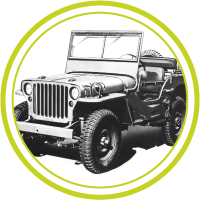
The end result was a vehicle that has been a mainstay of America for over seven decades. The vehicle was known by two separate names: Ford’s Model GPW (Goverment Vehicle, 80” inch wheel base, Willys engine), and the Willys company’s Model MB. These two vehicles became interchangeable to the men who operated them on the battlefields of the Second World War, and became known as ‘Jeep’s.
Originally it was believed that the name Jeep came from a slurring of the Ford designation of GP, but the former Marine and current actor R. Lee Ermey has cited the old cartoons of Popeye the Sailor, which had a small but capable secondary character named Jeep. This theory as to the origin of the Jeep’s name seems to hold more credence as more of the soldiers and marines who drove the vehicles would have been familiar with the cartoon rather than the vehicle’s Ford designation.
During the Second World War the Jeep was not only used in large numbers by the military of the United States, but by the British and the Soviet Union as well. An estimated thirty percent of all Jeeps produced were sent directly to the United States’ two allies, especially the Soviet Union in what was known as the Lend Lease Program.
Following the conclusion of the Second World War the Jeep remained an essential component of the American military. Throughout the Korean War and the Vietnam War the Jeep would remain in use, and the basic form of the vehicle would remain the same. As the needs of modern combat dictated, however, the Jeep was slowly redesigned to meet the ever changing needs of the military. The Jeep Wrangler, though, which is still sold, clearly shows the lines of the original vehicle built by the American Bantam Car Company.
Like it’s predecessor, the Bantam Reconnaissance Car, the Jeep Wrangler proudly boasts an impressive off-road capability. Jeep enthusiasts today have numerous options to adapt their Wrangler’s to their specific needs and wants, whether that’s the raising of the frame, redirecting the muffler system, or something as simple as taking the doors off. The Jeep Wrangler that is cruising down the avenues and back woods of the United States, then, would still be easily recognizable by the first military men who would have driven them in the early 1940s.
The Hummer

Today’s Hummer has seen several generations of change, the most current physical incarnation being a far cry from the original design and inspiration of the vehicle itself.
The Hummer that can be found in the car lots of America is based on the military Humvee, a vehicle that has seen a large amount of usage from the American military for over forty years.
The Humvee was created out of the United States’ need for a vehicle to replace the aging trucks and Jeeps of the country’s military motor pool. Not only was a vehicle needed to replace those that were already in stock, but the new vehicle needed to meet the demands of a modern battlefield, and to plan for future combat missions and excursions as well.

In the 1970s, then, the United States’ Department of Defense put out a call for proposals to meet their new design requirements for a vehicle which the military labeled the “High Mobility Multipurpose Wheeled Vehicle”, or, the Humvee.
Several notable companies, such as the Lamborghini Company, entered designs and proposals, but the contract went to AM General, a subsidiary of the American Motors Corporation.
By 1981 AM General had a working prototype ready, and they submitted the prototype to the military for testing. The initial vehicle worked well and more vehicles were built for further testing, the end result of which was an order placed for 55,000 of the Humvees by the military.
This order was to be filled by 1985, and it was part of a plan by the Department of Defense to not only replace the Jeeps and more basic trucks of the military, but to act as a counter to the Soviet Union’s motorized units should war break out between the two superpowers.
Not only is the Humvee a mainstay of the American military, but it is in heavy use in a wide array of other countries’ militaries as well.
The concept of a motorized unit was quickly scrapped, though, and the Humvee quickly became the core of the United States’ military vehicles. Commanders no longer showed up in Jeeps, but in Humvees. Reconnaissance units no longer went out in Jeeps, but in Humvees. Humvees were adaptable not only for command or combat purposes, but they could be up-armored and equipped with a wide range of weapons (the M60 machine gun, the M240 machine gun, the .50 caliber machine gun, and the MK19 grenade launcher). In addition to their combat use for active offense and defense, the Humvee was also adapted to serve as combat ambulances to retrieve the dead and wounded. Currently, in the United States military alone, there are seventeen different types of Humvees, ranging in type from mobile ambulances to rocket launchers. The most effective model at the present time, though, is the M1151, which is allowing the United States military to streamline repairs and replacement parts.
The Humvee first saw combat in the invasion of Panama in 1989, in what was known as Operation Just Cause, and has seen action — and continues to see action — ever since. Humvees continue to be deployed in Iraq and in Afghanistan. Not only is the Humvee a mainstay of the American military, but it is in heavy use in a wide array of other countries’ militaries as well.
The reason for this is the fact that the humvee is a truly versatile and impressive vehicle
8 cylinder diesel engine
With a heavy duty 8 cylinder diesel engine the Humvee has a three speed transmission.
weighs under 6,000 lbs
And weighs just under 6,000 pounds.
speeds up to 70 mph
The Humvee can reach speeds of up to seventy miles per hour, stands sixteen inches above the ground, and brings a massive weight of firepower to virtually any point on the battlefield that may be inaccessible to larger, heavily armored vehicles.
16’ long, 7’ wide, 6’ height
The vehicle is sixteen feet long, a little over seven feet wide, and with a height of six feet. The height can be cut down another eighteen inches, thus enabling the vehicle to maneuver effectively in urban situations where the clearance might be lower than expected.
It is no surprise, then, that the Humvee is a favored vehicle for militaries worldwide, or why it would be a popular vehicle in the United States of America where such a vehicle would symbolize freedom of movement and rugged independence.
Production of the Hummer line officially ceased in 2010
The first Humvees that appeared on American roads, independent of the military, were decommissioned military Humvees purchased by military enthusiasts. The popularity of the vehicle, and the familiarity of the American people with the Humvee following the First Gulf War, inspired AM General to produce and release the Hummer H1 in 1992, a civilian version of the Humvee.
The H1 and H2 versions of the Hummer were extremely large vehicles, causing difficulties not only in parking and driving, but in fuel economy and in accidents on the road. The Hummer H3 quickly followed with the H3 model being smaller, more affordable and economical version of the H1 and H2. While production of the Hummer line officially ceased in 2010, the vehicles can still be seen on the road today, as can their predecessor, the military grade Humvee.
It should come as no surprise that certain military vehicles have made the jump from the field of battle to the streets of the United States of America
Since the Second World War America has been in a state of military preparedness should the Cold War with the former Soviet Union break out into an actual shooting war between the two major players. Hundreds of thousands of American men and women have served in the various branches of the United States’ military, and many of them bonded — as only Americans can — to the vehicles which they drove in their youth. In addition to this Americans pride themselves on a sense of independence, and both the Jeep and the Humvee are symbols of this.
Regardless as to the specific reasons why they made the jump, the Jeep, the Humvee, and the armored car are all excellent examples of military vehicles making a successful transition from military to civilian life.
The Jeep and the Humvee, then, have been able to grow in American society as cultural representations of independence and strength, while the armored car has taken on a more practical role. Armored cars, though they had their military genesis in the late 19th century, still serve to protect the financial and physical well-being of the people. Financially this is done as money and high end merchandise are transported from one facility to another, and physically when a direct threat is presented by criminals or terrorists.
Compare quotes from the top auto insurance companies and save!
Secured with SHA-256 Encryption
Tracey L. Wells
Licensed Insurance Agent & Agency Owner
Tracey L. Wells is a licensed insurance agent and Farmers insurance agency owner with 23 years of experience. He is proud to be a local Farmers agent serving Grayson, Georgia and surrounding areas. With experience as both an underwriter and agent, he provides his customers with insight that others agents may not have. His agency offers all lines of insurance including home, life, auto, RV, busi...
Licensed Insurance Agent & Agency Owner
Editorial Guidelines: We are a free online resource for veterans interested in learning more about auto insurance. Our goal is to be an objective, third-party resource for everything auto insurance-related. We update our site regularly, and all content is reviewed by auto insurance experts.


